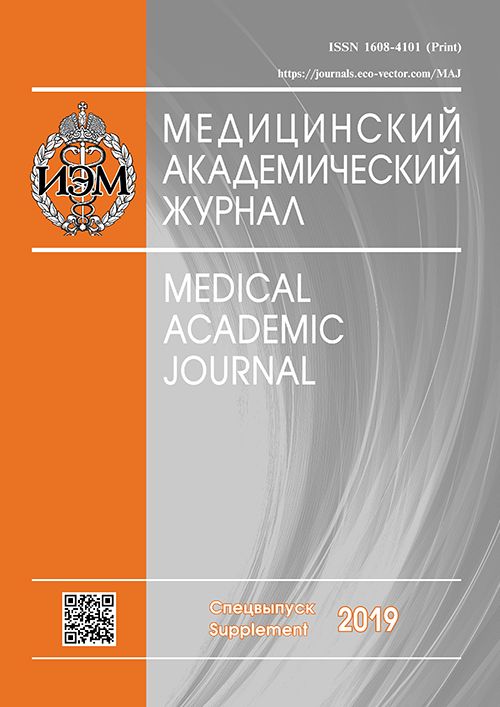AUTONOMIC NERVOUS REGULATION OF HEART RATE AND BIOELECTRIC BRAIN ACTIVITY AT THE HEART RATE VARIABILITY BIOFEEDBACK IN HUMANS DEPENDING FROM THE INITIAL SERUM TNF-α LEVEL
- Authors: Poskotinova LV1, Demin DB1, Krivonogova EV1, Stavinskaya OA1, Balashova SN1
-
Affiliations:
- N. Laverov Federal Center for Integrated Arctic Research, RAS, Arkhangelsk
- Issue: Vol 19, No 1S (2019)
- Pages: 36-37
- Section: Articles
- Published: 15.12.2019
- URL: https://journals.eco-vector.com/MAJ/article/view/19312
- ID: 19312
Cite item
Abstract
The aim of this study was to determine the amplitude-frequency characteristics of the electroencephalogram (EEG) and heart rate variability (HRV) in humans, depending on the initial serum TNF-α level at a single session of heart rate variability biofeedback (HRV BF) due to increase the total power of the HRV spectrum. Among hypertensive individuals (blood pressure 140-160/80-100 mm Hg) subgroups with an optimal serum TNF-α level (below than 75 quartile - 84,4 pg/ml) and with a high serum TNF-α level (more than 84,4 pg/ml) were selected. In individuals with an optimal serum level of TNF-α, an increase in the total HRV spectral power, a decrease in the stress index, systolic blood pressure and a decrease in the EEG power in the theta range in the frontal brain regions after HRV BF session were identified. In individuals with a high serum TNF-α level the effectiveness of HRV BF was minimal against the background of continuing sympathicotonia and high theta EEG-activity.
Keywords
Full Text
About the authors
L V Poskotinova
N. Laverov Federal Center for Integrated Arctic Research, RAS, Arkhangelsk
D B Demin
N. Laverov Federal Center for Integrated Arctic Research, RAS, Arkhangelsk
E V Krivonogova
N. Laverov Federal Center for Integrated Arctic Research, RAS, Arkhangelsk
O A Stavinskaya
N. Laverov Federal Center for Integrated Arctic Research, RAS, Arkhangelsk
S N Balashova
N. Laverov Federal Center for Integrated Arctic Research, RAS, Arkhangelsk
References
- Vaschillo EG, Vaschillo B, Lehrer PM. Characteristics of resonance in heart rate variability stimulated by biofeedback. Applied Psychophysiology Biofeedback. 2006;31(2):129-142.
- Demin DB, Poskotinova LV. Changes in the spectral characteristics of the electroencephalogram during biocontrol of heart rate variability parameters in healthy subjects. Neuroscience and Behavioral Physiology. 2018;48(8):913-916.
- Master SL, Amodio DM, Stanton AL, et al. Neurobiological correlates of coping through emotional approach¬. Brain Behavior and Immunity. 2009;23(1):27-35.
Supplementary files







